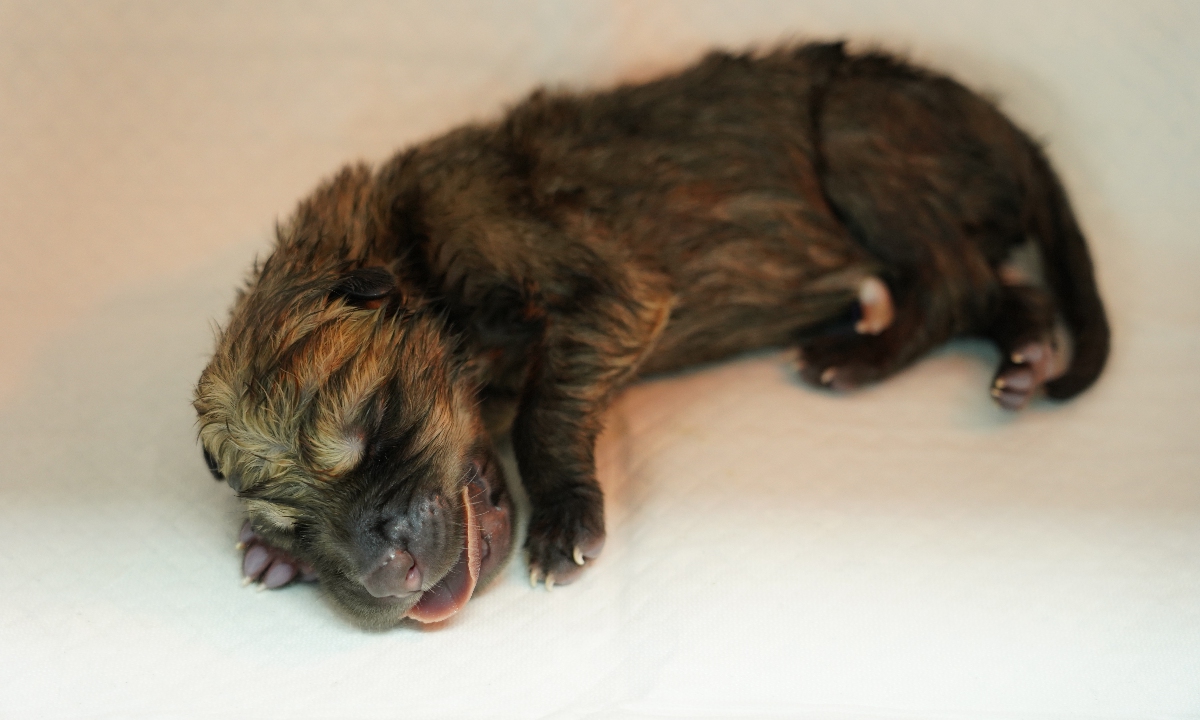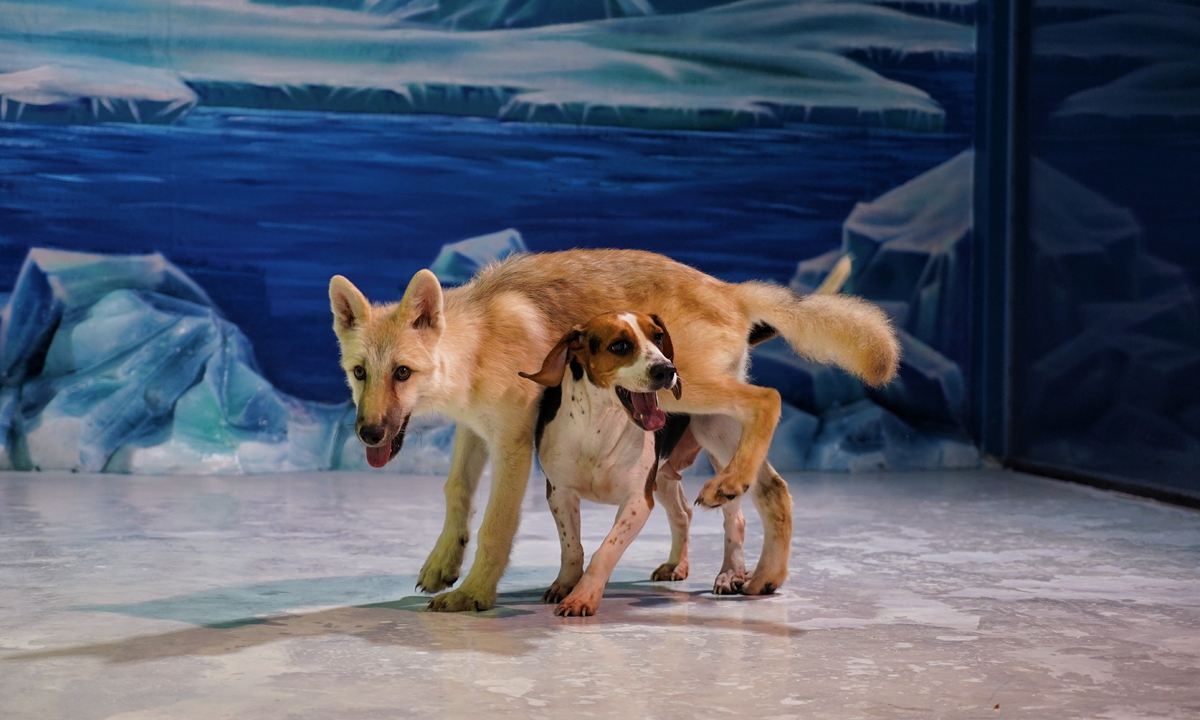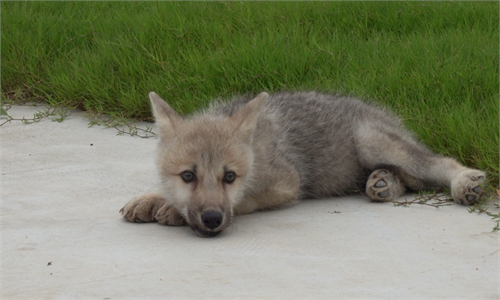Second cloned arctic wolf born, proving cloning tech to be effective in recovery of endangered species

Pictured is Ha’er, the second cloned arctic wolf, who was born on September 22 in a lab of Sinogene Biotechnology in East China’s Xuzhou city. Photo: Courtesy of Sinogene
Three days after Maya, the first cloned arctic wolf, celebrated her 100th day since birth, the second cloned wolf cub "Ha'er" was born on September 22 in a lab of Sinogene Biotechnology Co in Xuzhou, East China's Jiangsu Province, the Global Times learnt from the company on Wednesday.
It further proves that cloning technology is able to provide strong support for the world wildlife protection efforts and the recovery of endangered species.

The first cloned arctic wolf, Maya, shows up in Harbin Polarland located in Northeast China’s Heilongjiang Province on September 28, 2022, along with the wolf’s surrogate mother, a beagle. Photo: VCG
Same as the first one, the new cloned wolf cub was carried by his surrogate mother, a beagle, and its donor cell came from skin sample of a wild male arctic wolf who was also from the wildlife park in Harbin Polarland located in Northeast China's Heilongjiang Province.
The new cloned wolf cub is named after the male arctic wolf from the Harbin Polarland which was firstly introduced from Canada as "Ha'er." The new born cub Ha'er will also be bred in the Harbin Polarland when he grows 100 days in the Sinogene's facility, Dai Rui, the general manager of the Harbin Polarland, told the Global Times on Wednesday.
With the healthy birth of the two cloned arctic wolves, the breeding of cloned arctic wolves will also be put on the agenda, researchers from Sinogene told the Global Times. They hope the cloning technology can be applied to more endangered wild species, and make a positive contribution to the global biodiversity protection.
In the future, Ha'er and Maya are expected to have their next generation, Dai said. She also revealed that her wildlife park and Sinogene have no plan to create the third or the fourth cloned arctic wolf for now, but they will work together to clone other species in the next step. Dai refused to share more information.
Ha'er shares similar physiological indicators with Maya. He weighted 571 grams and was 20 centimeters long at birth, while Maya weighted 520 grams and 22 centimeters long.
The two wolves were sampled at the same time on November 5, 2020, but Ha'er was born three months after Maya. Researchers from Sinogene explained to the Global Times that due to difficulties and challenges in implementing the cloning technology on arctic wolves, Maya's embryo was the first to succeed in the process. Researchers said there is no gender difference in implementing cloning technology.
The Global Times learnt that the cloning of Ha'er was accomplished by constructing 99 new embryos from enucleated oocytes and somatic cells, followed by the transfer of 61 embryos to the uteri of seven beagles, of which one was born as healthy wolf cub.
Meanwhile, the first cloned arctic wolf Maya has been living in the Harbin Polarland for a week now, Dai told the Global Times.
Video obtained by the Global Times showed Maya, who was born on June 10 this year, has grown very fast, already bigger than her surrogate mother beagle. They live together in a separate room where they seem to be never tired of playing with each other.


